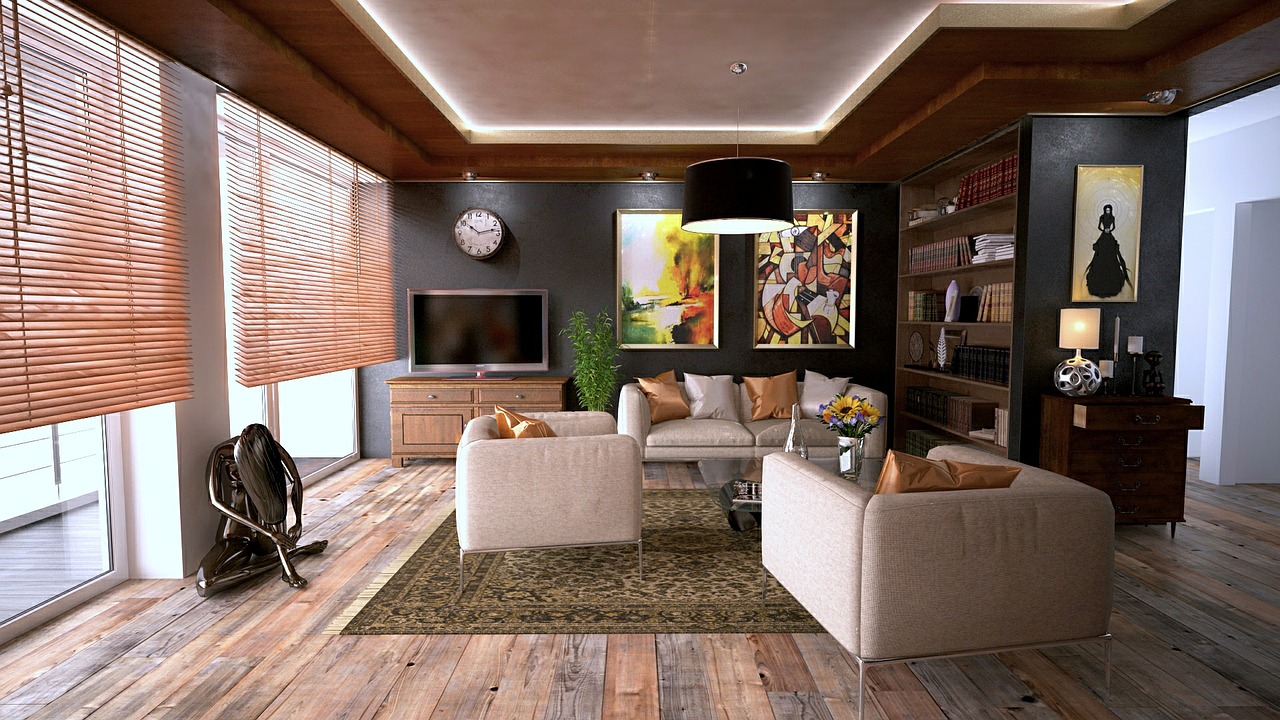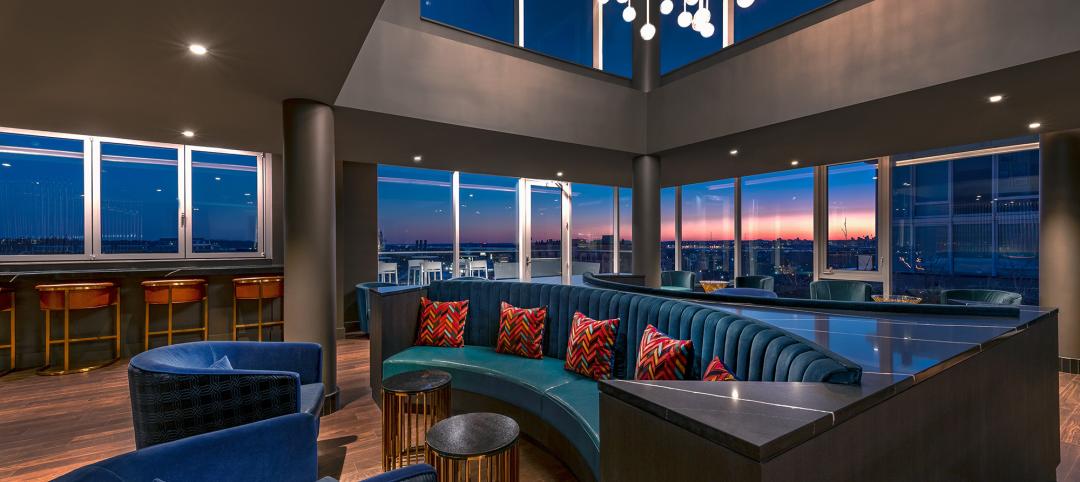The average new apartment in the U.S. is about 8% smaller than the average was a decade ago. And that shrinkage wasn’t confined to urban markets, either.
Those are two of the main findings in a recent survey of the apartment market, conducted by RENTCafé, a nationwide apartment search website, using data provided by Yardi Matrix, a sister company that researches and reports on multifamily properties of 50 units or more across 121 markets in the U.S.
That research shows the size of new apartments averaging 934 sf, versus 1,015 sf in 2006. New studio apartments took the steepest decline, to an average 504 sf this year from 614 sf a decade ago, representing a nearly 18% difference. New two-bedroom apartments, on the other hand, at 1,126 sf, are actually 1% larger than the average for that apartment type in 2006.
RENTCafé estimates that the average apartment size in the U.S., regardless of when it was built, is 889 sf. There are three regions of the country that exceed the average—the Southeast (974 sf), South (937), and Mid-Atlantic (891).
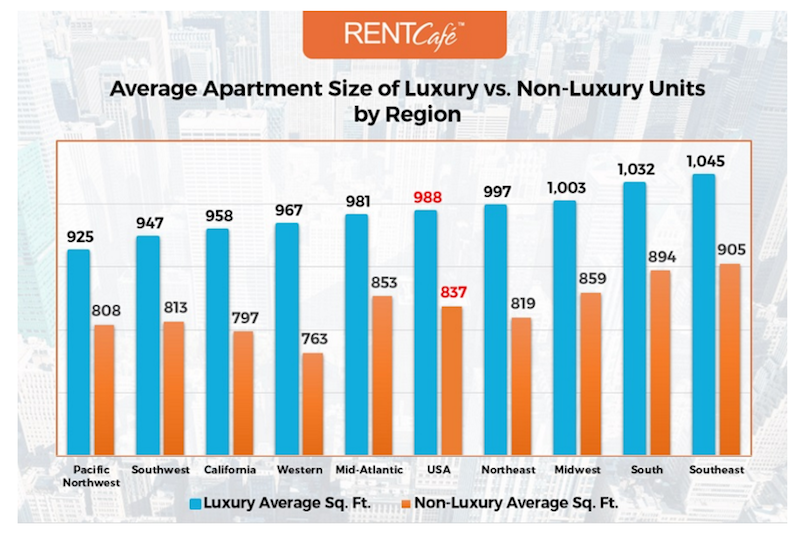
The southern regions of the U.S. still give renters the most for their buck, in terms of average apartment size. Image: RENTCafe
The largest gap between luxury and non-luxury apartment sizes is in the western states, 967 sf vs. 763 sf. Conversely, the gap between luxury and non-luxury apartments in the Southeast is relatively narrow: 1,045 sf vs. 905 sf.
Atlanta leads all cities with the largest average apartments, followed by Plano, Texas; Jersey City, N.J.; Henderson, Nev.; and Chesapeake, Va. Arizona has three of the five cities—Tucson, Glendale, Mesa—with the smallest average apartment sizes. (El Paso, Texas, and Buffalo, N.Y., fill out that ranking).
By far, Atlanta leads all cities with the largest average two-bedroom apartments, at 1,125 sf; Jersey City is its closest rival in that category, at 1,097 sf.
Interestingly, neither New York, San Francisco, nor Boston—three cities where the micro apartment crae hit first—ranks among the top 20 cities for smallest apartment size. (In fact, Boston is No. 10 in among the cities with the largest average apartments.)
“But that doesn’t erase the fact that Manhattan remains the nation’s tightest market, with average rents reaching a whopping $4,043 per month, more than three times the national average,” Yardi Matrix data show.
RENTCafé’s survey breaks down 95 metros and their average apartment sizes by studio, one-bedroom, and two-bedroom. In Los Angeles, the country’s largest city, a studio apartment averages 524 sf, a one-bedroom 729 sf, and a two-bedroom 1,043 sf. Reno, Nev., has the smaller average studios (352 sf), Stockton, Calif., the smaller average one-bedroom (632 sf), and Buffalo the smallest average two-bedroom (843 sf).
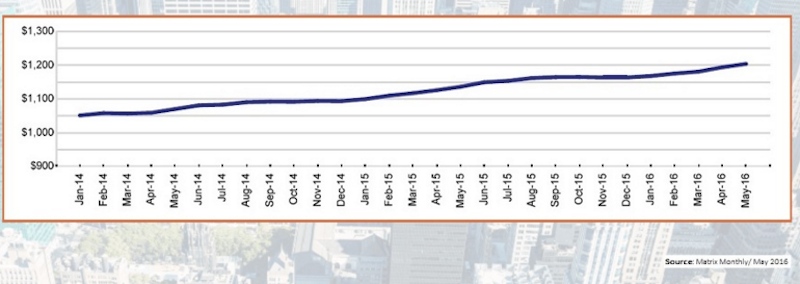
Despite the shrinkage in apartments, rents aren't retreating. Image: RENTCafe
The survey cautions, however, that while apartments are shrinking, their rents may not be. “Apartment rents are breaking record after record,” with the national monthly rent hitting an average of $1,204 in May, the report states. In San Francisco, “you’ll still be paying $2,500 for a 500-sf studio.”
There is increasing demand for high-density housing with mixed-use components, which are being directed specifically at Millennials and downsizing Baby Boomers.
Another thing that hasn’t changed: Renters desire apartment buildings with lots of amenities. RENT Café points to Eastown, the largest apartment community delivered to L.A.’s rental market last year. Located in Hollywood, the community includes a pool and spa with lounges, a fireplace and patio area, a gym and fitness center, and electric vehicle charging stations. Rents start at $1,925 for a 571-sf apartment.
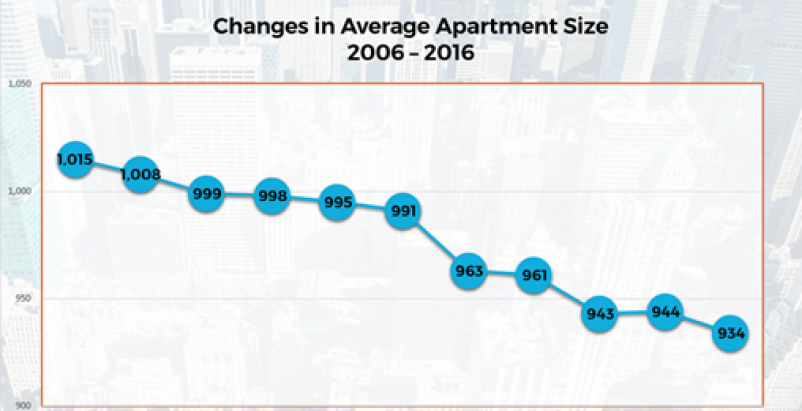 The average size of a new apartment in the U.S. has been on a steady decline for the past 10 years, according to a new survey that tracks apartment sizes in most major metros across the country. Image, which shows average square footage by year: RENTCafe
The average size of a new apartment in the U.S. has been on a steady decline for the past 10 years, according to a new survey that tracks apartment sizes in most major metros across the country. Image, which shows average square footage by year: RENTCafe
Related Stories
MFPRO+ Research | Feb 27, 2024
Most competitive rental markets of early 2024
The U.S. rental market in early 2024 is moderately competitive, with apartments taking an average of 41 days to find tenants, according to the latest RentCafe Market Competitivity Report.
Designers | Feb 23, 2024
Coverings releases top 2024 tile trends
In celebration of National Tile Day, Coverings, North America's leading tile and stone exhibition, has announced the top 10 tile trends for 2024.
MFPRO+ Special Reports | Feb 22, 2024
Crystal Lagoons: A deep dive into real estate's most extreme guest amenity
These year-round, manmade, crystal clear blue lagoons offer a groundbreaking technology with immense potential to redefine the concept of water amenities. However, navigating regulatory challenges and ensuring long-term sustainability are crucial to success with Crystal Lagoons.
Building Tech | Feb 20, 2024
Construction method featuring LEGO-like bricks wins global innovation award
A new construction method featuring LEGO-like bricks made from a renewable composite material took first place for building innovations at the 2024 JEC Composites Innovation Awards in Paris, France.
Student Housing | Feb 19, 2024
UC Law San Francisco’s newest building provides student housing at below-market rental rates
Located in San Francisco’s Tenderloin and Civic Center neighborhoods, UC Law SF’s newest building helps address the city’s housing crisis by providing student housing at below-market rental rates. The $282 million, 365,000-sf facility at 198 McAllister Street enables students to live on campus while also helping to regenerate the neighborhood.
Multifamily Housing | Feb 16, 2024
5 emerging multifamily trends for 2024
As priorities realign and demographic landscapes transform, multifamily designers and developers find themselves in a continuous state of adaptation to resonate with residents.
MFPRO+ News | Feb 15, 2024
UL Solutions launches indoor environmental quality verification designation for building construction projects
UL Solutions recently launched UL Verified Healthy Building Mark for New Construction, an indoor environmental quality verification designation for building construction projects.
MFPRO+ News | Feb 15, 2024
Nine states pledge to transition to heat pumps for residential HVAC and water heating
Nine states have signed a joint agreement to accelerate the transition to residential building electrification by significantly expanding heat pump sales to meet heating, cooling, and water heating demand. The Memorandum of Understanding was signed by directors of environmental agencies from California, Colorado, Maine, Maryland, Massachusetts, New Jersey, New York, Oregon, and Rhode Island.
MFPRO+ News | Feb 15, 2024
Oregon, California, Maine among states enacting policies to spur construction of missing middle housing
Although the number of new apartment building units recently reached the highest point in nearly 50 years, construction of duplexes, triplexes, and other buildings of from two to nine units made up just 1% of new housing units built in 2022. A few states have recently enacted new laws to spur more construction of these missing middle housing options.
Multifamily Housing | Feb 14, 2024
Multifamily rent remains flat at $1,710 in January
The multifamily market was stable at the start of 2024, despite the pressure of a supply boom in some markets, according to the latest Yardi Matrix National Multifamily Report.


